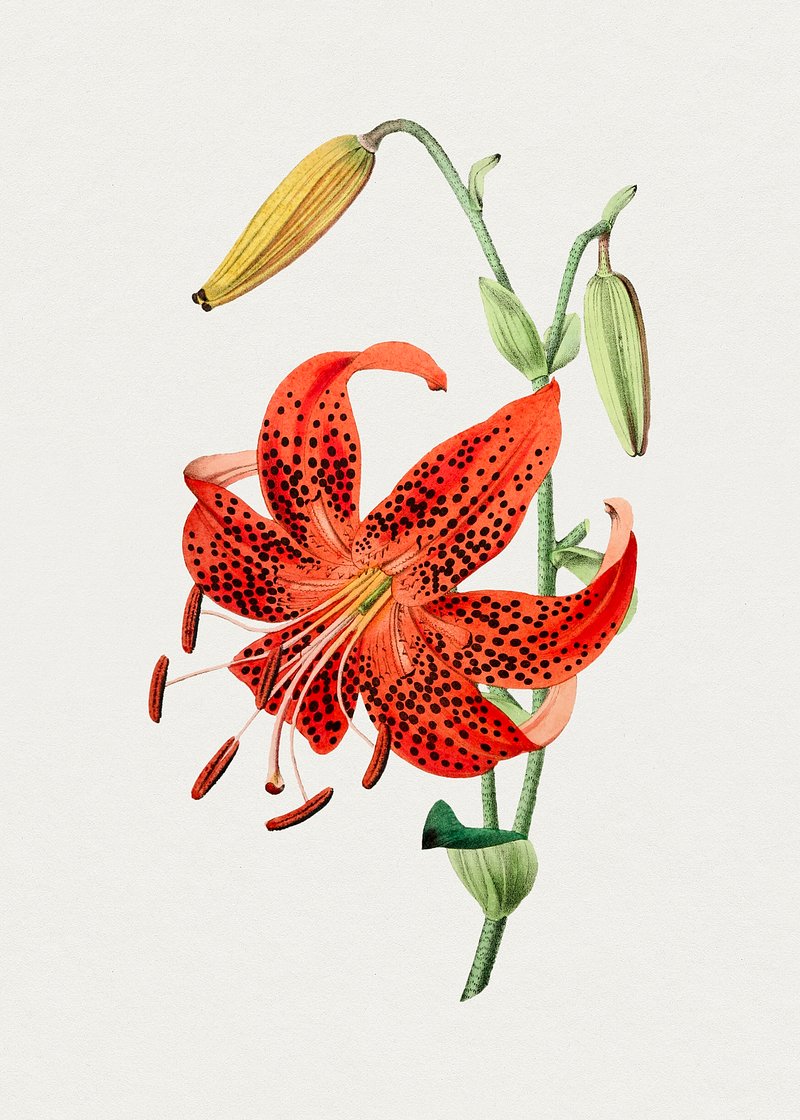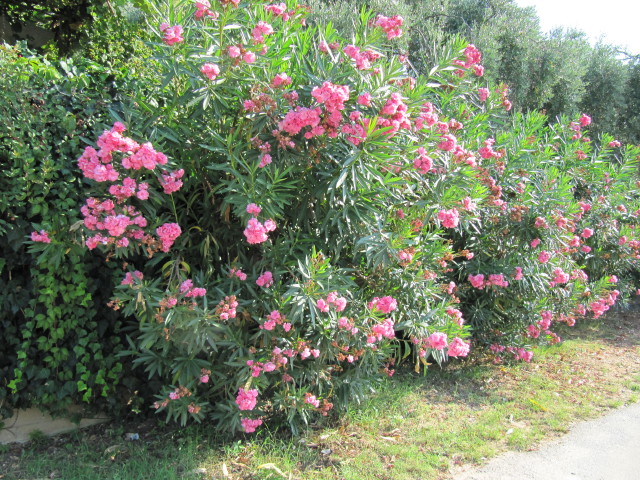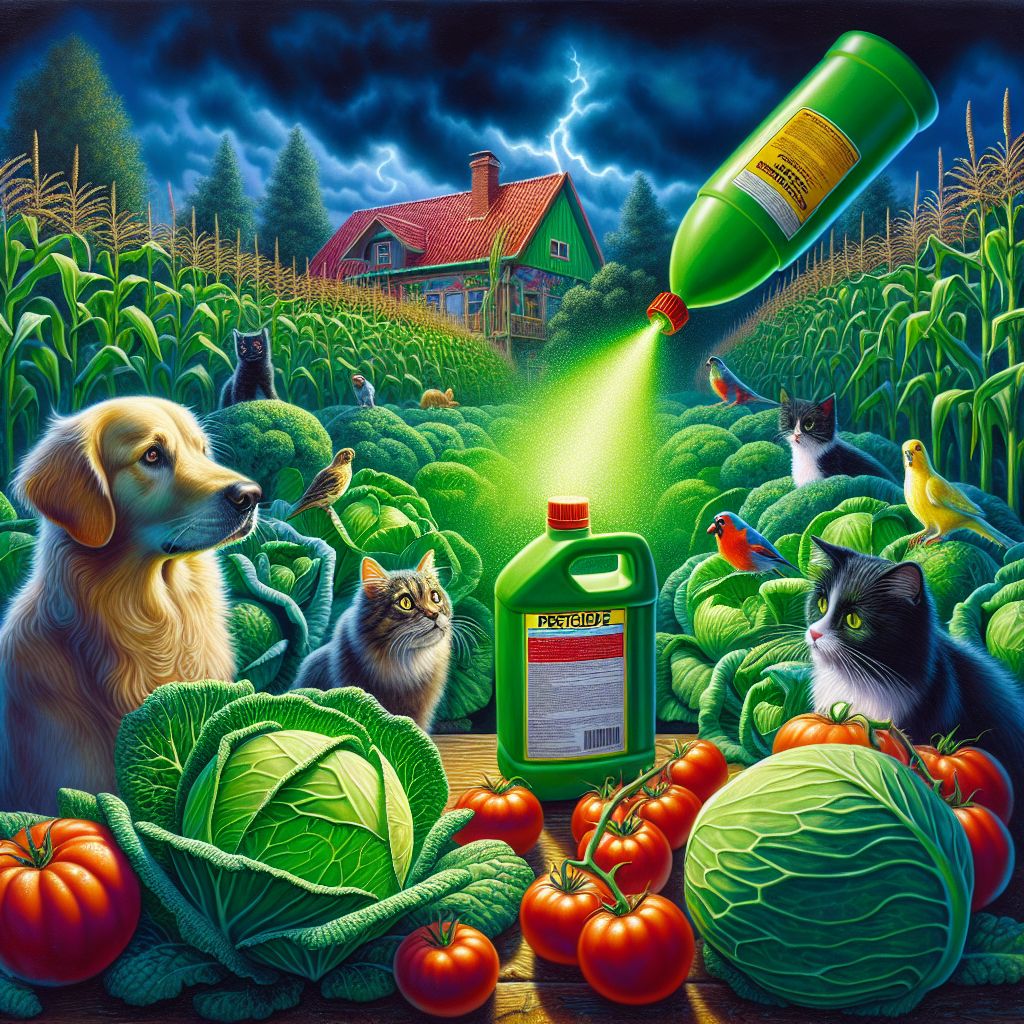Contents
As a pet owner, creating a safe environment for our furry friends is a top priority. When it comes to gardens, it’s crucial to know that not all that’s green is good for your pet. To ensure your pet’s safety outdoors, let’s dive into identifying common garden hazards and the steps you can take to prevent accidents.
Key Takeaways
-
Identify toxic plants that are common in gardens and dangerous to pets.
-
Implement preventive measures to keep pets away from hazardous areas.
-
Learn how to create a pet-friendly garden using safe plant alternatives.
-
Understand the risks associated with garden chemicals like pesticides and fertilizers.
-
Know the immediate first aid steps and when to seek veterinary care if your pet is poisoned.
Creating a Safe and Pet-Friendly Garden

“Pet Friendly Garden | Free CC0 Art …” from www.rawpixel.com and used with no modifications.
Our gardens can be a paradise for pets to explore, but hidden among the foliage are potential dangers. It’s our job to ensure that the plants and products we use won’t harm our curious companions. Let’s start by familiarizing ourselves with the plants that pose the biggest threats.
Recognize Common Toxic Plants
Many plants that are visually appealing to us can be toxic to our pets. Some common ones include:
-
Lilies: Extremely toxic to cats, causing kidney failure.
-
Oleander: Affects the heart, leading to severe health issues.
-
Rhododendron: Can cause vomiting, diarrhea, and even coma.
-
Sago Palm: Even a few seeds can be lethal, especially to dogs.
Remember, this is just a shortlist. Always research or consult with a professional before introducing new plants into your garden.
Preventative Measures to Protect Your Pets
Now that you’re aware of some common toxic plants, it’s essential to take action to prevent your pet from coming into contact with them. Here are a few tips:
-
Create designated pet-friendly zones that are free from toxic plants.
-
Use physical barriers like fences to keep pets away from hazardous areas.
-
Train your pets to avoid certain spaces using positive reinforcement techniques.
Remember, supervision is key. Never leave your pets unattended in areas where they might encounter dangerous plants or substances.
Toxic Plants and the Dangers They Pose
When we think of garden dangers, plants like lilies, azaleas, and tulips often come to mind. These are just a few examples of plants that, while beautiful, can have dire consequences for our pets if ingested.
Lethal Lilies: Identifying Dangerous Varieties

“Tiger Lily Images |, PNG …” from www.rawpixel.com and used with no modifications.
Lilies are particularly hazardous to cats. All parts of the plant, including the pollen, can lead to severe kidney damage. It’s crucial to identify and remove any lilies from your garden if you have a feline friend. The most dangerous varieties include:
-
Tiger lilies
-
Daylilies
-
Asiatic lilies
-
Easter lilies
If you suspect your cat has come into contact with a lily, immediate veterinary attention is critical.
The Hidden Risks of Everyday Greenery
Even plants that are not notoriously toxic can pose risks. Many common garden plants can cause gastrointestinal upset or skin irritation. For instance, the popular English Ivy can cause vomiting, abdominal pain, and hypersalivation in pets.
Flowers With Fatal Consequences

“Nerium oleander | Golden Beach, Thassos …” from www.flickr.com and used with no modifications.
Some flowers, though a feast for the eyes, can be a fatal meal for a pet. Oleander, for example, is highly toxic and can cause heart failure. It’s best to either remove these plants or ensure they are completely out of reach of your pets.
Let’s not forget about the smaller members of the plant kingdom. Certain mushrooms that may sprout in your garden can also be toxic. Always remove any wild mushrooms and keep an eye out for new growth, especially after rainy periods.
Example: A family’s dog became severely ill after ingesting part of a Sago Palm. The dog was rushed to the vet and, fortunately, survived after receiving prompt treatment. This incident highlights the importance of pet-proofing your garden.
Stay tuned as we delve deeper into pet-proofing your garden space, handling chemical hazards, and first aid for pet poisoning in the upcoming sections of this guide.
Moving on to creating a space that’s not just safe, but also enjoyable for your pets, let’s explore some safe plant alternatives that you can include in your pet-friendly garden.
Safe Plant Alternatives for Pet Owners
While many plants can be harmful to your pets, plenty of beautiful and safe options can add life to your garden without putting your pets at risk. Consider these pet-friendly plants:
-
Catnip: Not only is it safe, but your cats will also love it!
-
Snapdragons: Colorful and non-toxic, they’re safe for dogs and cats.
-
Roses: Thorns aside, roses are non-toxic and come in various varieties.
-
Sunflowers: These towering beauties are safe for pets and make a statement.
By choosing these and other non-toxic plants, you can create a vibrant garden that’s a safe haven for your pets.
Physical Barriers and Design Strategies
Effective garden design can be the key to keeping your pets safe. Here are some strategies:
-
Use raised beds or hanging baskets to keep plants out of pets’ reach.
-
Consider sturdy fencing around the perimeter of your garden.
-
Opt for smooth-edged, pet-friendly garden decor to prevent injuries.
With thoughtful design, you can minimize the risks and maximize the enjoyment for both you and your pets.
Chemical Hazards Lurking in the Garden

Plants aren’t the only potential danger in a garden; chemicals used for maintenance can also pose a significant risk to pets. Let’s look at what to be cautious about and safer alternatives.
The Perils of Pesticides: Safer Alternatives
Many pesticides contain chemicals that can be harmful to pets if ingested or even if they come into contact with their skin. Consider these safer alternatives:
-
Neem oil: A natural pesticide that’s less harmful to pets when used correctly.
-
Diatomaceous earth: Can be used to control pests without toxic chemicals.
-
Soapy water: A simple solution for aphids and other small insects.
By using these alternatives, you’re not only protecting your pets but also the environment.
Fertilizers & Weed Killers: What to Watch For
Fertilizers and weed killers are another area of concern. While they help plants grow and keep weeds at bay, they can be dangerous if pets ingest them. Here’s what to watch for:
-
Choose pet-safe fertilizers that don’t contain bone meal, which can be tempting for dogs to eat.
-
Avoid using weed killers with glyphosate, and instead pull weeds by hand or use boiling water to kill them.
-
Always store garden chemicals out of reach and follow the instructions for safe use.
It’s all about finding a balance between maintaining a beautiful garden and ensuring the safety of your pets.
Example: After switching to pet-safe snail bait, a family noticed their dog showed no signs of the previous mild poisoning symptoms they hadn’t connected to the traditional snail pellets they used before.
Let’s not forget the crucial steps to take if your pet does encounter a toxin. Next, we’ll cover first aid and the importance of timely veterinary care.
First Aid: Responding to Pet Poisoning

“Responding to pet” from www.agenzianova.com and used with no modifications.
If you suspect your pet has ingested a toxic substance, quick action can make all the difference. Here’s what you should do:
Immediate Actions and At-Home Treatments
First, remove any remaining toxic material from your pet’s mouth and safely contain any plants or substances they may have been in contact with. Then, follow these steps:
-
Don’t induce vomiting unless directed by a veterinarian.
-
Offer a small amount of water to help dilute the substance.
-
Call your veterinarian or a pet poison hotline immediately for guidance.
Having a first aid kit for your pet, including activated charcoal or milk of magnesia, can also be helpful in certain situations.
When to Seek Veterinary Care
It’s essential to seek professional medical attention if your pet shows any signs of poisoning, which can include vomiting, diarrhea, lethargy, or seizures. Take note of the following:
-
Always have your veterinarian’s number and an emergency clinic’s contact information readily available.
-
Bring a sample of the ingested substance, if possible, to help the vet provide the best treatment.
-
Monitor your pet closely for any changes in behavior or health following exposure to potential toxins.
Remember, your vigilance and quick response are vital in protecting your pet’s health.
In the final part of this guide, we’ll delve into building a harmless habitat with plants safe for pets and frequently asked questions that can help you become even more prepared as a pet-friendly gardener.
As we wrap up our guide, let’s focus on the positive aspects of gardening with pets. Building a harmless habitat is not only about removing dangers but also about creating a space where both you and your pets can thrive.
Build a Harmless Habitat: Plants Safe for Pets

Creating a pet-safe garden doesn’t mean you have to sacrifice beauty or variety. There are numerous plants that are safe for pets and can add color, texture, and interest to your outdoor space. Here’s a list to get you started:
-
Herbs such as basil, thyme, and sage are safe for dogs and can be used in your cooking as well.
-
Flowers like marigolds, zinnias, and snapdragons bring a pop of color without the danger.
-
Grasses, such as blue oat grass or buffalo grass, provide a lush groundcover that’s safe for pets.
With these plants, you can design a garden that’s both aesthetically pleasing and worry-free for pet owners.
Creating an Inviting Garden That Won’t Harm Your Furry Friends
When designing your garden, consider the needs and behaviors of your pets. Use sturdy, non-toxic plants around the borders to create a natural barrier. Incorporate paths for your pets to explore and designate a specific area for them to enjoy. A sandbox for digging or a water feature for them to play in can make the garden an interactive space for your pets.
Most importantly, stay informed about the plants and products you use in your garden. When in doubt, consult a professional or do thorough research to ensure the safety of your furry family members.
Frequently Asked Questions (FAQs)

How can I quickly identify if a plant is toxic to my pet?
To quickly identify if a plant is toxic to your pet, you can use resources like the ASPCA’s Toxic and Non-Toxic Plants list, which is available online. Always have a reliable guide handy, and when purchasing new plants, ask your local nursery for pet-safe options.
What are the common symptoms of pet poisoning?
The common symptoms of pet poisoning include vomiting, diarrhea, drooling, lethargy, and changes in appetite or behavior. In severe cases, you may see seizures or difficulty breathing. If you notice any of these signs, contact your veterinarian immediately.
Is it safe to use natural DIY pesticides in a pet-friendly garden?
While natural DIY pesticides can be safer than chemical options, they can still pose risks if not used correctly. Always research the ingredients and their effects on pets, and apply them according to the instructions. When possible, opt for physical pest control methods like traps or barriers.
How often should I survey my garden for potential hazards?
You should survey your garden for potential hazards regularly, especially as the seasons change and new plants grow. A good rule of thumb is to do a thorough check at least once a month and after any major gardening or landscaping work.
Can pets still enjoy the garden even with toxic plants present?
Pets can still enjoy the garden if toxic plants are present, but you must take precautions. Ensure toxic plants are fenced off or placed out of reach, and always supervise your pets when they are in the garden. Consider creating a specific pet-friendly zone where they can play safely.



